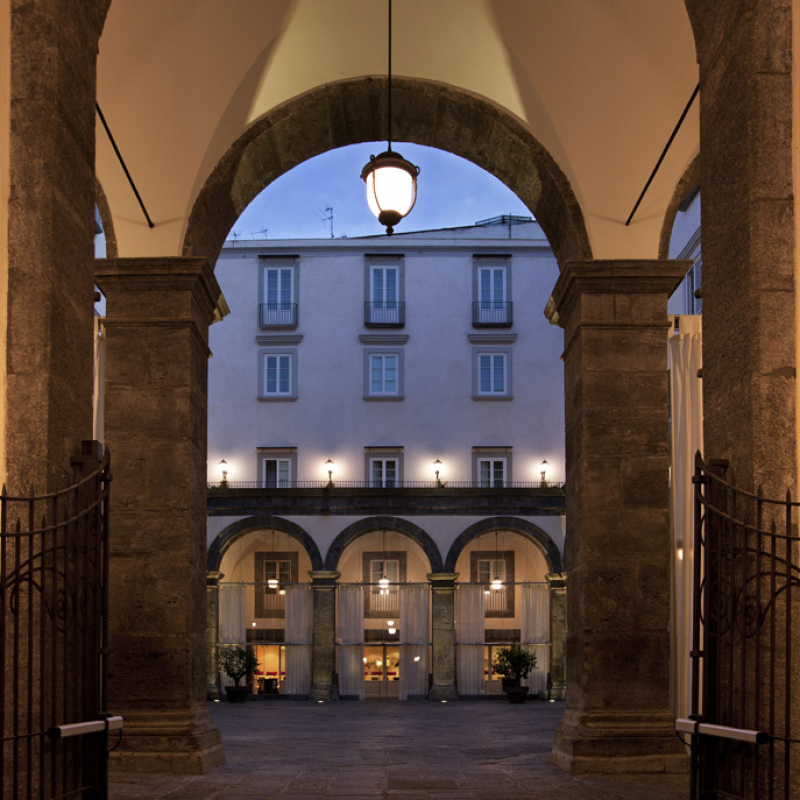HISTORY
The palace holds a long history. The Caracciolo’s family, after which the hotel is named, was an ancient Neapolitan family of byzantine origins, in the city since the IX century.
The palace was built in the XIII century on the foundations of a pre-existing military fort.
At the time the area which the palace was built in, was the setting for noblemen’s swordfighting and jousting tournaments, a place where the bravest knights of the kingdom of Naples fought each other.
The history of the Caracciolo’s family and of the palace meet in the year 1309, as the building is donated by Charles II of Anjou, King of Naples, to Landolfo Caracciolo.
In 1548, the medieval palace was renovated, reshaped taking on its current configuration.
The palace still has the typical, renaissance style, central cloister.
From the year 1650, Palazzo Caracciolo increasingly gained reputation and was often used to host high-profile weddings, often becoming the home of the young newlyweds.
It also became the home of Joachim Murat, before his coronation in 1808 as King of Naples.
In the XXI century the palace was carefully restored and renovated, the work was completed in 2009. The renovation enhanced the magnificence of the palace, while softening the style of the rooms with refined elegance.


The renovation project never lost sight of the historical-monumental footprint of the building: respectful of the long history of the palace, the renovation approach was focused on re-using and integrating the old, not on demolishing and replacing it. The objective was identifying the “Soul of the Palace” and enhancing it, thus keeping the unique identity of the place.

While researching a style for the hotel in line with the pre-existing architectural style and decorations, the designers took inspiration from Naples: from its nature (the sun, the sea, the intense colors of the flowers) and from its myths (The Munaciello or Ghost Monk, Parthenope the mermaid and so on).
While exploring Neapolitan culture, the designers naturally found inspiration in the decors of the local handkraft tradition.
So, in all the design of the rooms, artisanship took on a relevant role.


MONUMENTAL STAIRCASE
The wide monumental staircase, of great architectural value, is the pièce de résistance of the hotel: on every floor of the stairs a carpet of majolica tiles based on original drawings by the artist Eduardo Alamaro, dedicated to the Muses and to Beauty. The tiles (which Neapolitan people call "riggiole") capture, both in their design and in their making, the sense of tradition of the place while combining it with the innovation and sensibility of our contemporary times.





















